I landed in Vietnam with no plans but a few disperse pins on the map. On my very first night in Hanoi, I met a kind traveller who told me to go north. “You have to see the Ban Gioc waterfalls”, she said. “Don’t check it on Google! Just go! Trust me.” Another traveler agreed. “The north! You must go north! Leave Hanoi and go north!”
So I took out a map, I marked the waterfalls on it, and I packed my bag two mornings later, direction: north. How? National route 1B.
The first province I was to cross was Lang Son, with a town called Bac Son on the way. Bac Son would be the first of many beautiful places that make the northern countryside of Vietnam one of the most beautiful places on Earth. From there, it just got more and more beautiful as I rode north and westward.
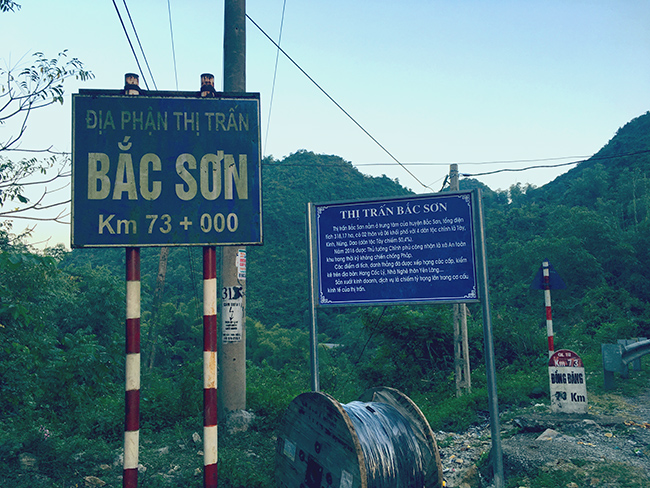
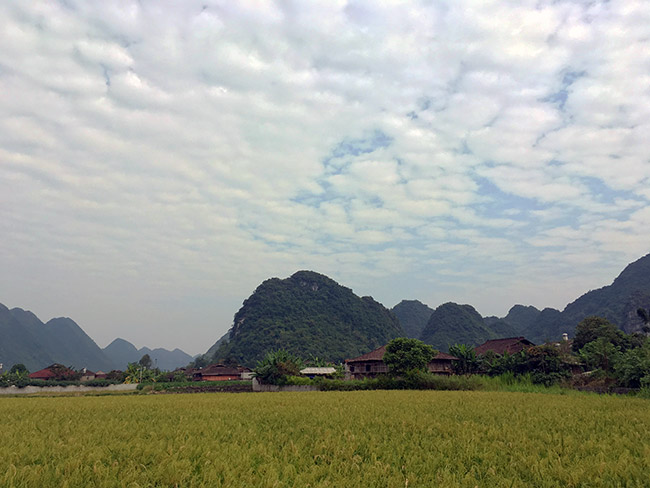
How to get to Bac Son
North-bound buses leave Hanoi from (at least) My Dinh station (Bến xe khách Mỹ Đình), which is located quite west from the city center (21.028329,105.7771). There are many local buses to My Dinh from Old Quarter.
Getting there was supposed to be easy, but I misread the destination of the first bus I got on. The ticket collector told me right after charging me the fee, so I decided to enjoy a bit of a joy ride since I had already paid for it… A bus tour, one transfer, and two bowls of beef pho later, I reached My Dinh and jumped on the first bus going north.
In Vietnam, or at least in the north, bus stations have a static board with all bus schedules and fares. Note that some locals might not know about some buses, and also some buses are not on the board. The bus from My Dinh to Bac Son costs 75,000 VND (2.7 EUR).
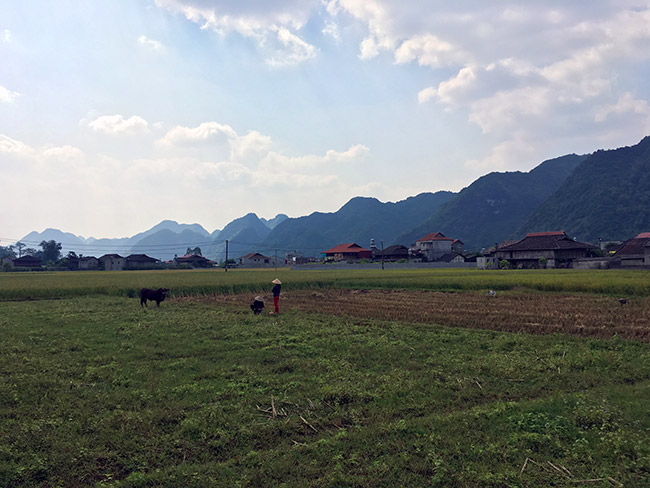
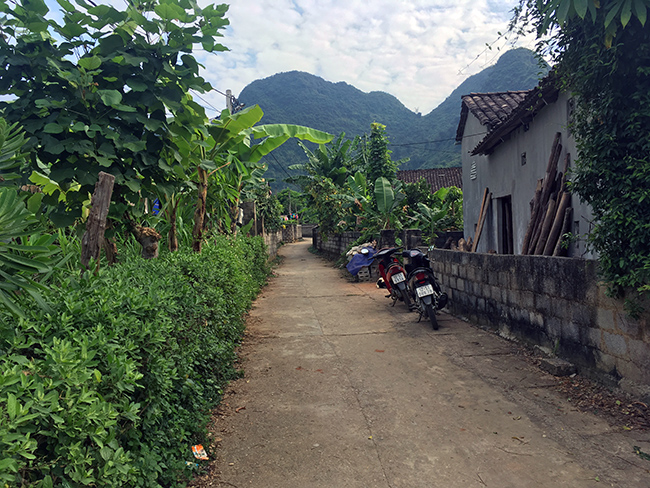
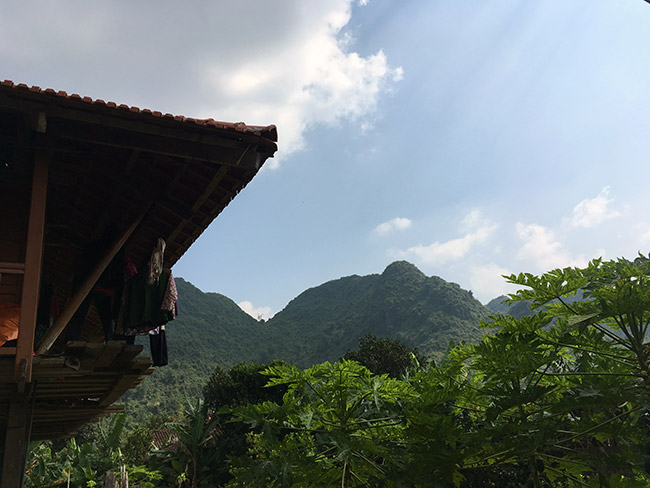
The old village of Bac Son
As I stepped out of the bus in Bac Son I was dropped on the main road of Bac Son, more specifically the new town. Momentarily frustrated, I quickly shot my maps app and realized this row of newly built houses only took a small portion of the valley.
A local helped me reach Homestay Bac Son, my accommodation for the next days. On the way to the homestay I noticed we were leaving behind the town and venturing into the fields along a path that crossed a river and reached the northern side of the valley’s bottom. We came to the old village, also known as Quynh Son.
The homestay was a wooden house with a stone kitchen, a beautiful and cozy home for travellers. I quickly discussed the price with the young manager of the business and proceeded to drop my luggage and set out. I was so happy to get started, to begin exploring the region.
Bac Son is a valley of green fields drenched on golden sunlight from sunrise to sunset, year-round. A silver river and a laidback town of field workers complete the picture. A beautiful place, there to be looked at, somewhat timeless and indifferent to the modernization happening downtown.
I was quickly attracted to the sights of this town, and soon found myself adrift in its humble labyrinth of small streets, homes, laboring villagers and dogs. Every dead end was different: a pond, a farm, a cemetery, even a temple.
After losing myself for a few hours, I decided to climb the nearby Nà Lay hill and see it all from above.
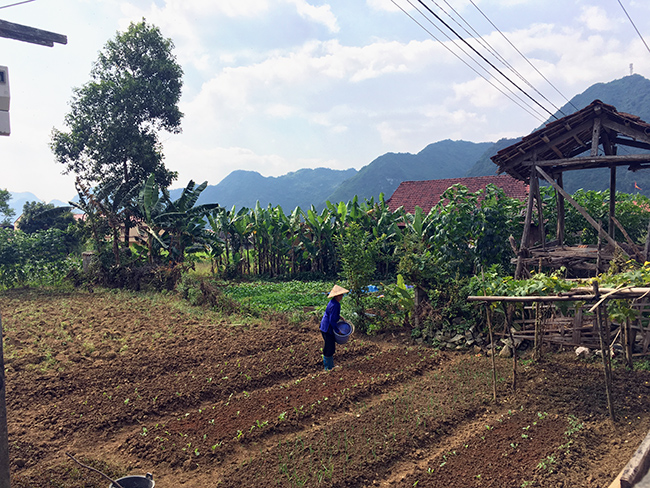
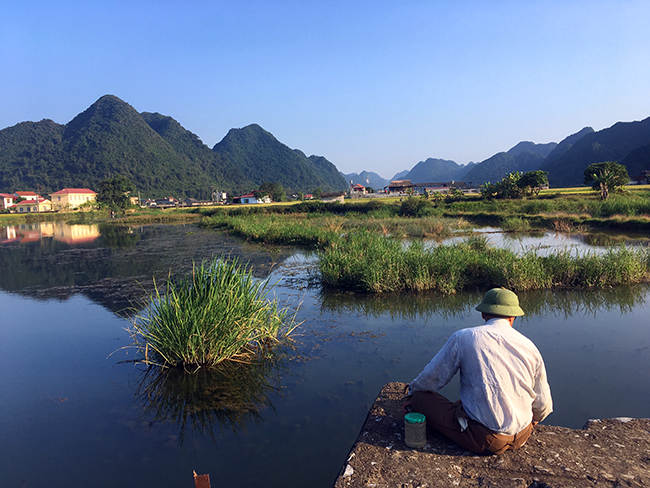
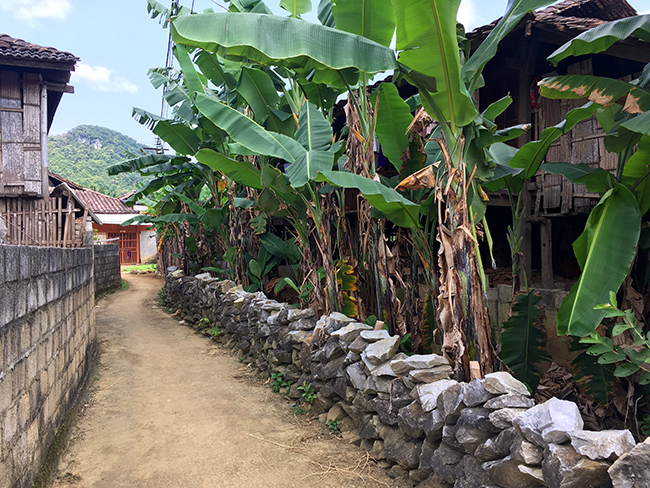
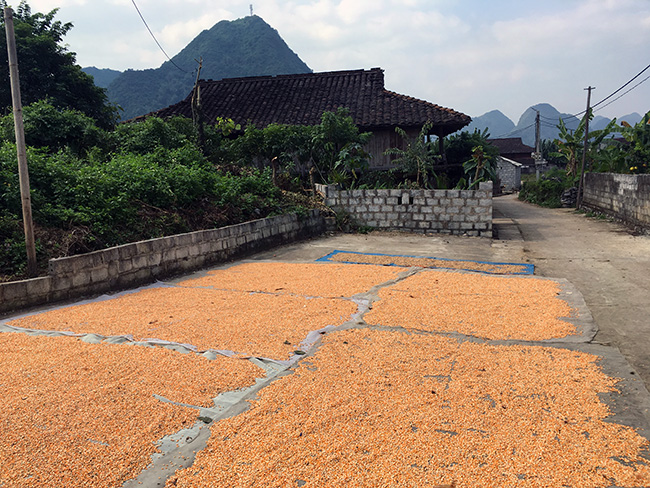
Traditional architecture
Traditional houses in northern Vietnam are built on stilts. That is, the main structure is raised on piles over the surface of the soil.
The materials are anything strong enough found in the tropical forests: wood, bamboo, rattan, cane, etc.
All Quynh Son houses seem to be produced using the same pattern. The ground floor is used for parking of vehicles, storage of tools or raising cattle. Sometimes it’s just empty. Since the ground floor captures cold air for longer times than the first floor, some families have a place for chilling there as well.
Household life takes place upstairs, on the first floor. Accessed by a single set of stairs on the street-side of the house, the wooden-walled first floor is usually extended with balconies and terraces.
The foundation piles pierce through the first floor and then become the columns that divide the space into squares and rectangles. Curtains are then employed to complete the bedchambers. Finally, colorful carpets cover most of the floor, decorating the orange wooden walls.
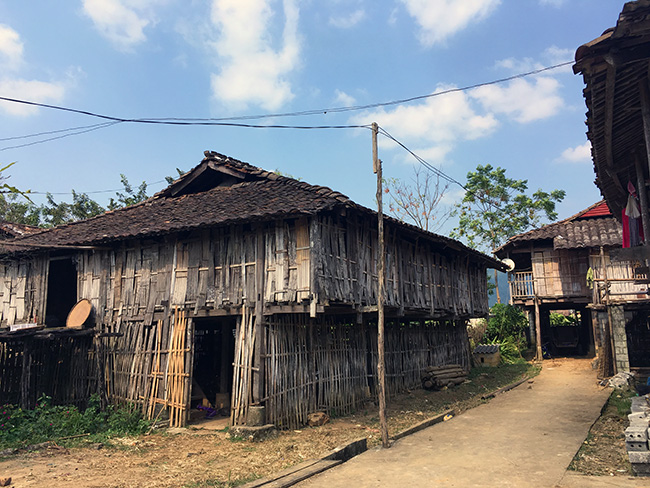
Although some houses are completely built using wood, a lot of families opted for stone-based kitchens and bathrooms.
The coolest home in the village used the platform at the top of the stairs for drying the grain, and that’s also where the watchdog stayed all day, stately looking after the house.
Finally, the position of the house is also relevant due to superstitious reasons. If you build your house-on-stilts facing arrow-shaped mountains, you will face accidents. If you build it facing animal-shaped mountains, your animals will die. So the ancestors of the Nùng tribes believed.
Although I first came across this architecture in Vietnam, I later realized this type of ethnic houses can be found in many other regions of south-east and east Asia. It makes sense because a lot of ethnicities in this part of the world have shared or intersecting origins.
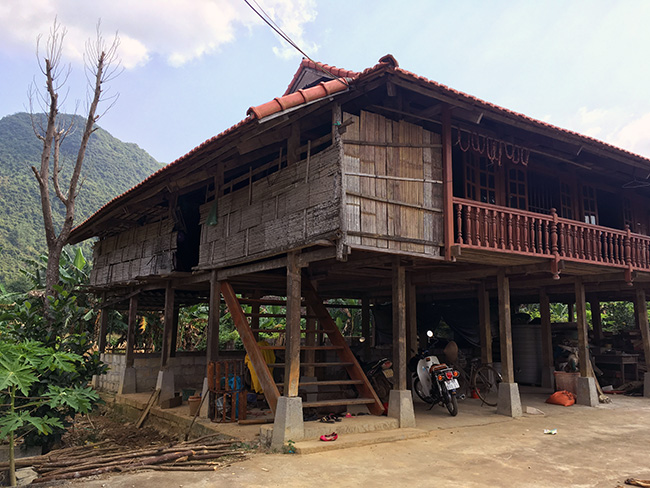
Mingling with the villagers
One way to get mixed in the local community was through the owner of the homestay, who obviously knew everyone.
The old town villagers would gather every day at the volleyball court. Volleyball seems to be a very popular sport everywhere in Vietnam. I wonder if France brought it along when it occupied the place back in the 19th century, but the Vietnamese people I asked did not seem to know about that, and neither did Google.
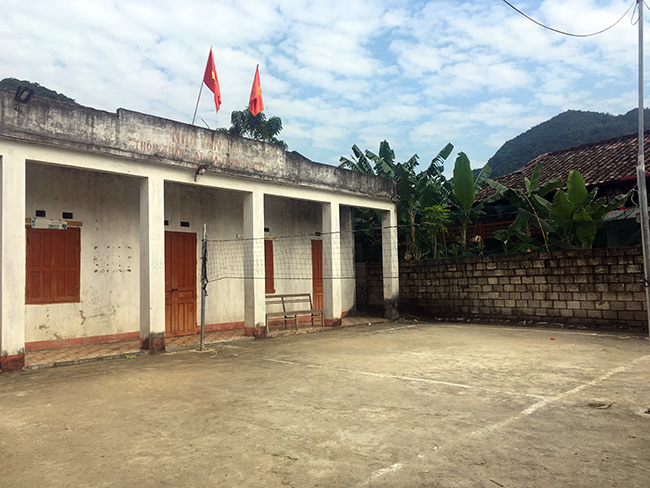
Most of them spend the day working the fields. I loved walking around the fields. The golden green vastness was only interrupted by farmers’ conical hats made of straw and the occasional helping bull. Boys and girls shadowed their elders while trying to learn the millenary craft.
The perfect postcard scenery is nowadays slightly ruined by the electricity poles and cables, but that’s what makes night volleyball games possible!
Some villagers also found time to fish in the river. And some other took care of different kinds of livestock. Our neighbour had a bunch of cute pigs squealing around all day long.
Finally, what was left of the day as the Sun labored into the twilight was spent socializing by the road. DT241 is a country side road that separates Quynh Son and the fields. There, one can find a few basic convenience stores and some sort of bars where locals gather to catch up.
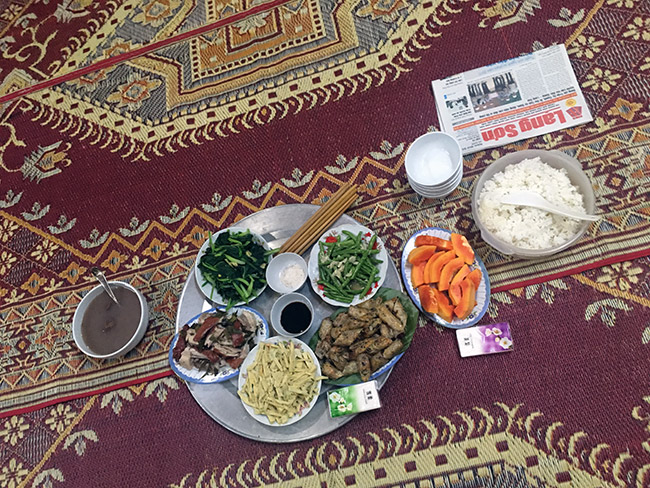
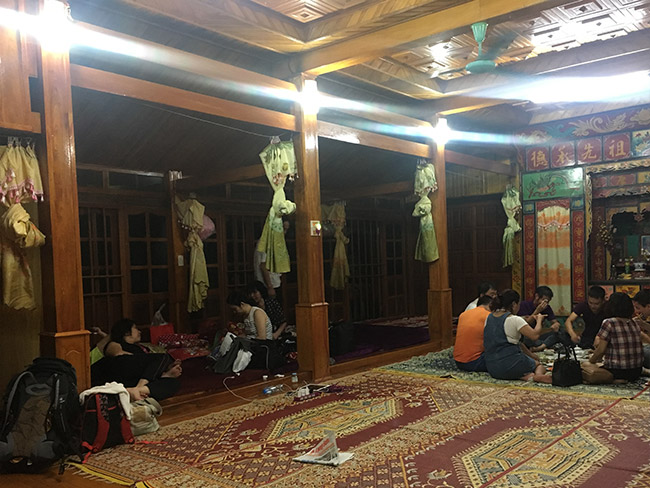
- What: Quynh Son, or the old village of Bac Son. Nearby villages.
- Where: Lang Son Province, Vietnam.
- When: August-September ideally because the fields are spectacular right before the harvest season, but the whole of the valley is beautiful all year round.
Hi Ferran,
I’m planning my trip to Hanoi and I came across your blog about Bac Son Valley. I think I’m interested to see that place too.. If the weather good I going to explore that valley instead of sapa however it’s too difficult to find information ex. How to reach BacSon Homestay – I’m a solo female traveler and I don’t feel like joining a tour group from hanoi.
Few questions – I hope its okay?
1. What bus did you took from My Dinh to Bac Son? ( one bus only?)
2. When this bus drop you in Bac Son town – did you take another bus to Bac Son Homestay? ( what are the available vehicles on that area? Or do i have to wait for this XYZ bus to pass by? )
3. Does the homestay keeper/owner offer you a tour guide? I think i need one if the weather is good I would like to hike NaLay peak before sunrise.
This is crazy long questions and I’m really really grateful I stumbled upon your blog.. I will reread your vietnam stories… might get additional information.. but I’m looking forward for your feedback. Thanks so so much in advance!!
Enjoy Japan! That is one of my favorite country.
Cheers!
Rome
Hello Rome! Your message was marked as spam hence my delay in answering, I am sorry!!
1) One bus only. I can’t remember the bus number, it was a sitting bus. This is the ticket, but I don’t think it gives much info. I asked around the tour agencies for information, and all they could tell me was to be at My Dinh early in the morning because there were no buses after noon. Make sure to tell at least a local on the bus so that he/she can make sure you get off at Bac Son and don’t miss it.
2) The homestay is a 30 minute walk from the bus stop. There are no local buses that go around the city, locals use bicycles or motorbikes.
3) The owner of the house will definitely be your guide if you are willing to pay for the service. I rented a motorbike off him, and then visited the valley on my own, and with traveller I met while climbing Na Lay.
Sorry I can’t be of more help regarding the bus. Just make sure to get to My Dinh before 10AM or something like that, and look for the schedule board inside the bus station building.
And enjoy Vietnam!!!! I am having a very nice time in Tokyo these days 🙂
Ferran
Hi, I”m planning a trip for the labor day holidays, how can I contact that homestay?
Hi Ivan,
I found them through https://www.booking.com/hotel/vn/homestay-bac-son-lang-son.html